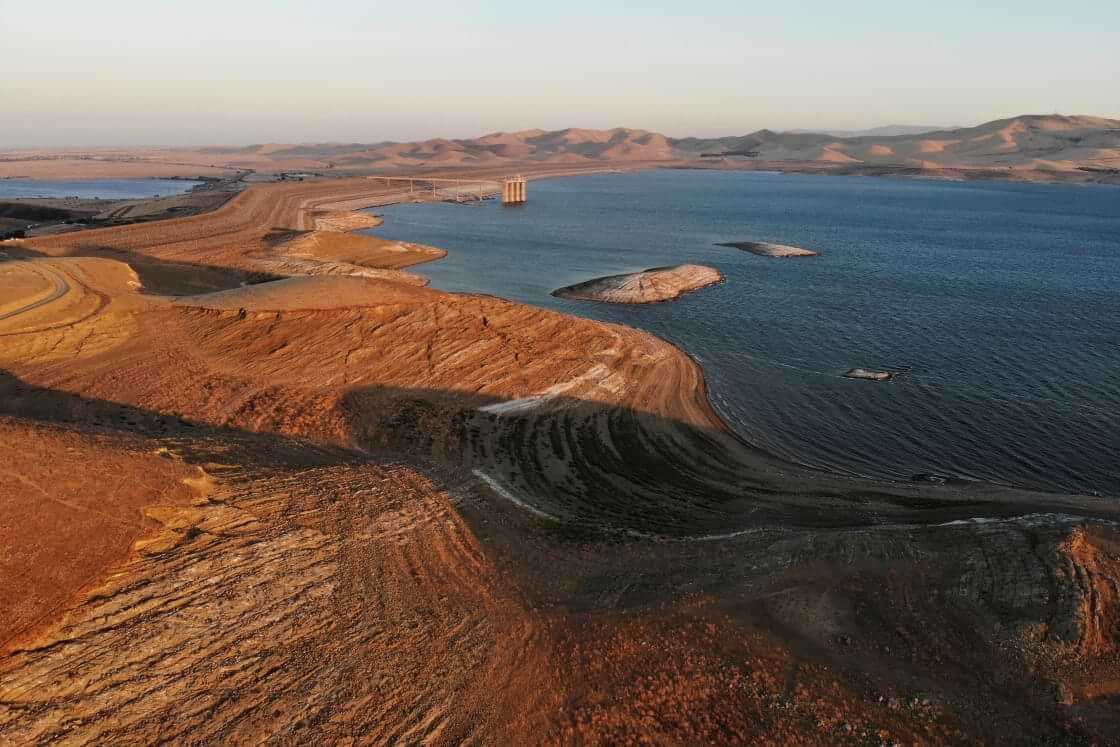
FILE - Water levels are low at San Luis Reservoir, which stores irrigation water for San Joaquin Valley farms, in Gustine, Calif., Sept. 14, 2022. The past three years have been California's driest on record and state officials said that they're preparing for the streak to continue. (AP Photo/Terry Chea, File)
In recent years, various regions across the United States have experienced unusual weather patterns and circumstances. They tend to be anomalous on the basis of their location, their timing in the year, or in their level of severity.
Hurricane Ian is a relevant example, a category 4 hurricane that rocked Florida in September, described as the deadliest storm in the state since 1935.
California is no stranger to large-scale, weather-based crises either.
For the past twenty years, the state has been experiencing a fluctuation of severe drought, followed by intense seasons of flooding. As the state currently pushes through a historic drought season, a coalition of farmers near the city of Huron is beginning to develop ingenious methods to not only combat impending floods but also to enable them to recharge the region’s water supply in later cycles of drought.
The “recharging” process
Established as a partnership between these local farms and the city itself, this project will see the transformation of unused farmland—particularly hemp and tomato fields—into massive receptacles to trap run-off flood water, which will drain into underground aquifers to be stored during droughts.
Not only would water supplies be replenished, but the proposed plan could keep the small city’s population of less than seven thousand safe from flood damage.
The Huron Project runs in conjunction with nearly 340 other proposed recharge stations across California. According to the state’s Department of Water Resources, if all systems were developed, enough water for 4.4 million households a year could be provided.
The innovation of these projects is remarkable, for they accomplish their water conservation goals without further damaging the environment. Typically, California’s network of man-made reservoirs and dams has redirected rivers and flooded canyons, causing dramatic shifts in the state’s ecosystem of plants and wildlife. In this case, however, plots of farmland will be able to drain the water underground, making less of an impact on California’s topography.
The innovation of California’s farmers and engineers should remind us of the importance of preparing for catastrophe, from the most personal to ones on a global scale.
The same behavior is echoed in the Bible, as we can see when we look at a significant moment in the Old Testament.
Biblical examples of prudence
Once a prisoner, Joseph was appointed an official of Egypt following his interpretation of the Pharaoh’s dream. Joseph predicted a great famine would spread throughout the kingdom and advised Pharaoh to gather a fifth of the harvest during Egypt’s seven years of plenty so that it could be kept on reserve in the seven years of famine that would follow immediately after.
Pharaoh’s question, “Can we find a man like this, in whom is the Spirit of God?” (Genesis 41:38) highlights what Joseph had shown in previous verses: there is a divine, God-inspired component to discerning and preparing for the future.
Of course, we are not to allow prudence to slip into fear or despair. Such action betrays a lack of trust in our heavenly Father, who “clothes the grass of the field, which today is alive and tomorrow is thrown into the oven” (Matthew 6:30).
But what is proclaimed in the story of Joseph is reinforced in the practical wisdom of the proverbs. We are told that “the prudent sees danger and hides himself, but the simple go on and suffer for it” (Proverbs 22:3).
Elsewhere, we are instructed to consider the ways of the ant and how it “stores its provisions in summer and gathers its food at harvest” (Proverbs 6:8 NIV).
A warning accompanies the image: “A little sleep, a little slumber, a little folding of the hands to rest—and poverty will come upon you like a robber, and want like an armed man” (Proverbs 6:10–11).
The blessings of prudence
Certainly, material blessings come with adequately preparing for trouble. For example, the estimated costs of California’s projects will be around $2 million each. For the sake of comparison, repairs for flooded roads in California’s El Dorado County totaled $600 million in 2017.
However, God’s desire for us to be prudent in our preparations is not merely for monetary purposes. Nobody knows when Jesus will return and bring about the restoration of God’s creation (Matthew 24:36). Until then, we are not only called to prepare the way for him, but we must also admit that we live in a dangerous world.
Disaster can strike at any moment. It is wise for us to think about what environmental, political, social, and spiritual threats may be approaching and humbly submit them to God. Doing so is the first step in creating a safe space for our children to follow after us, encountering the word of God and continuing his ministry for themselves.
Considering the unknowns that lay ahead of us can be unpleasant at best and frightening at worst. In trust, ask the Lord for guidance. In trust, step forward to engage with the future, arm in arm with the Holy Spirit.
How can you prepare for the future today?












